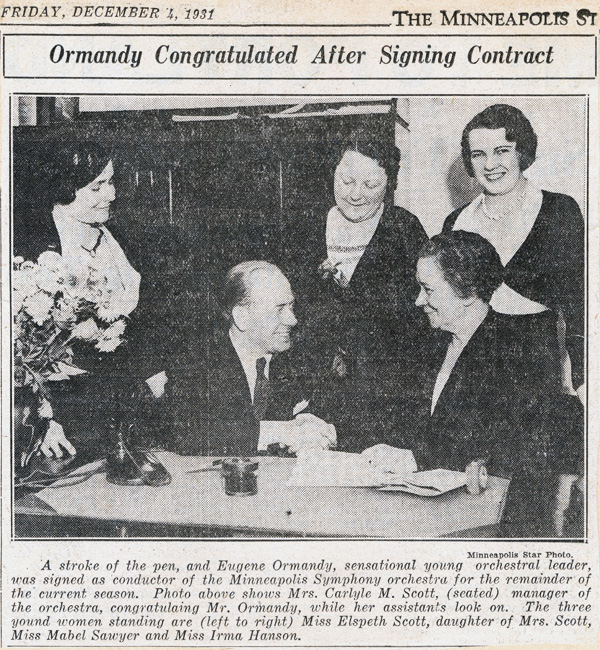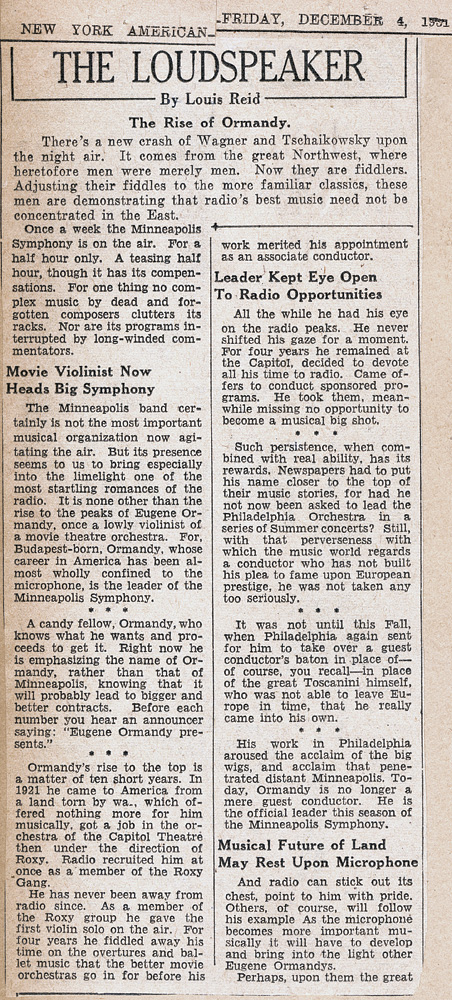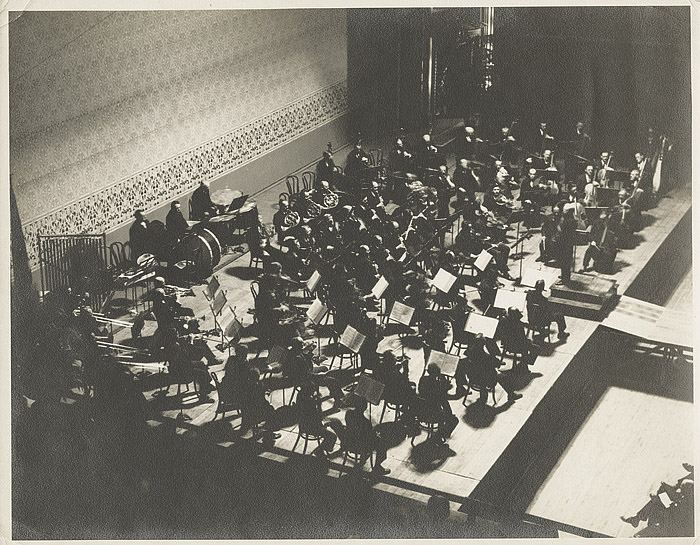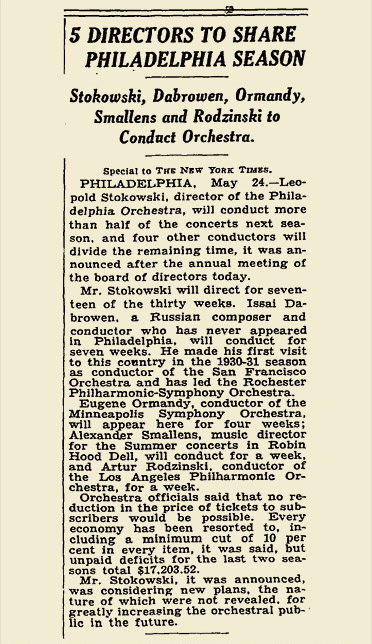Between the first and second concerts, Ormandy was offered a one-year contract as conductor of the Minneapolis Symphony with an annual salary of $20,000. (Because Verbrugghen was still on contract with the orchestra, the board had to mount a quick fundraising campaign to cover Ormandy's salary.) He was 32 years old. Once it was clear Verbrugghen would be unable to return, Ormandy's contract was extended, and he remained with the orchestra five years, through the 1935-36 season.
In a 1969 interview, Ormandy said that Verbrugghen "was one of those elderly conductors who enjoyed going to parties perhaps a little more than learning new scores. So Beethoven programs almost followed each other. For them, they didn't have to do much rehearsing, so the orchestra became a little careless. . . . [T]here was a first bassoon player, a Welshman named Cunningham. . . . [D]uring intermission [of the first rehearsal] he walked around. He had quite an influence with the orchestra, because he was very outspoken. He said, 'Well, boys, you can send your armchairs home. You won't need them anymore.'"
Fig. 2: Ormandy's interesting back story - young virtuoso violinist rises through the ranks of New York movie-house orchestra to conduct major symphony orchestra in Midwest - was picked up by the local papers, which published human-interest stories with headlines such as: "Ormandy happy 'beyond words' over new post: but he has his troubles - he didn't bring shirts enough with him." and "Ormandy now 'at home' - his violin's here." His ability to rely on his memory when conducting also made the news: a review in the 12 November 1931 Minneapolis Star bore the headline "Eugene Ormandy Discards Score in Concert Here."
Fig. 4: After the signing of a three-year contract following his first year, Ormandy began making major changes. Robert K. Sherman writes, "A new platform was installed on Northrop's cement-bottomed stage, raising the orchestra a few inches from the floor and giving better resonance to its tone. Ormandy retained the new orchestra pattern he had established the year before, the so-called Stokowski arrangement, which put the cellos to the right of the conductor and massed the second violins with the firsts at the left front." Rather than placing the winds on risers, he seated the entire orchestra flat on the platform, which helped improve the balance between the strings and brass.
Fig. 5: During Ormandy's five years in Minneapolis, he was careful to maintain a presence on the East Coast, setting his sights on larger and more prestigious appointments. Each year, he made several trips to New York and Philadelphia for guest conducting appearances, and he spent his summers conducting in Europe.




